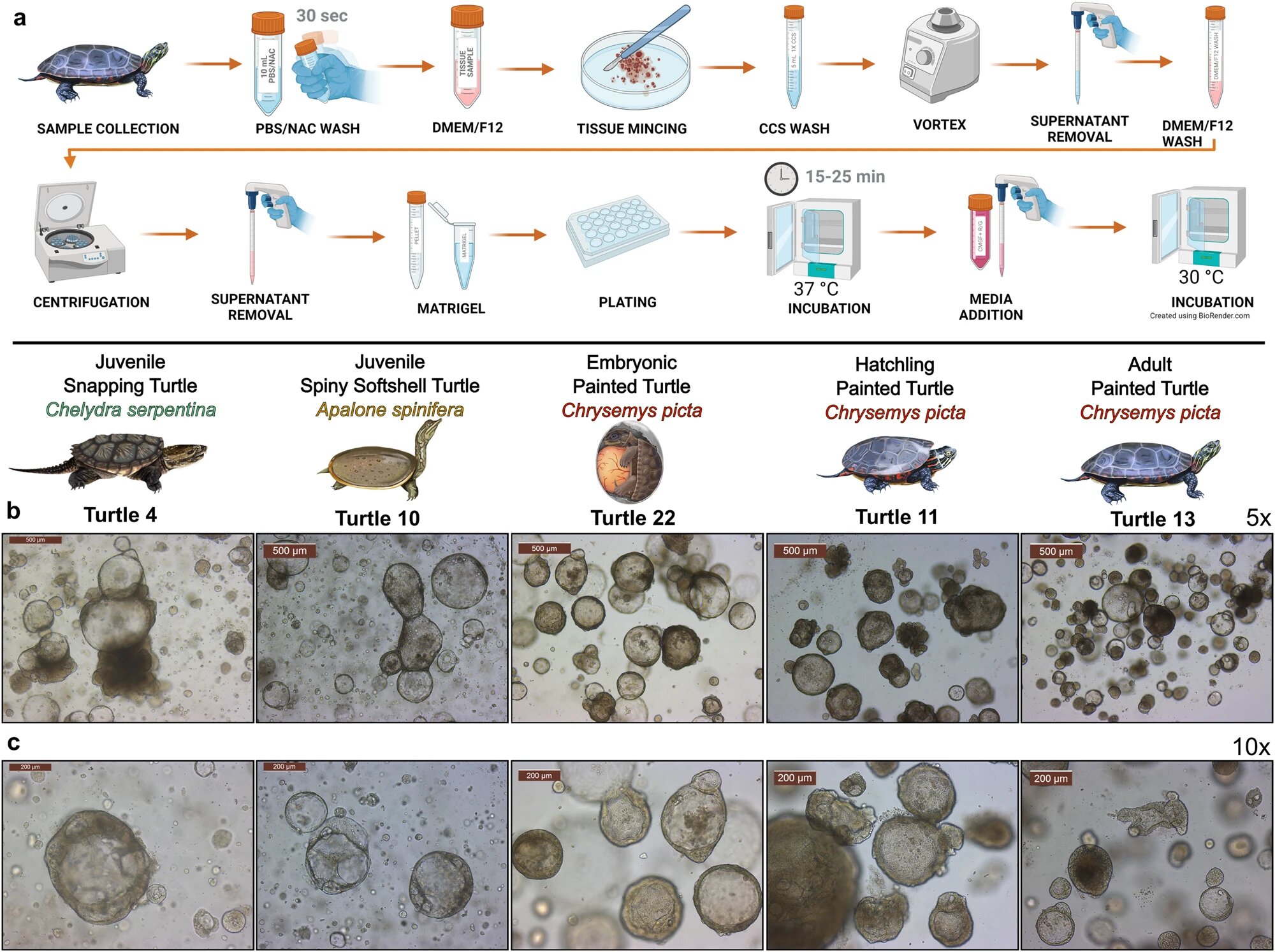Lab-grown liver organoid to speed up turtle research and make useful traits easier to harness
Date: 11.3.2024
The three-dimensional clusters grown from adult stem cells are called organoids and are designed to assist in research.
 In a paper published in Communications Biology, Nicole Valenzuela, professor of ecology, evolution, and organismal biology at Iowa State, and her colleagues describe their creation of organoids that mimic a liver from three species of turtles. It's the first set of organoids developed for turtles and only the second for any reptile.
In a paper published in Communications Biology, Nicole Valenzuela, professor of ecology, evolution, and organismal biology at Iowa State, and her colleagues describe their creation of organoids that mimic a liver from three species of turtles. It's the first set of organoids developed for turtles and only the second for any reptile.
Studying turtle genetics with a liver organoid should speed up research to uncover the cause of turtle traits that could potentially have medical applications for humans – the ability of painted turtles to survive weeks without oxygen and withstand extreme cold, for instance.
"Some of their unique adaptations make painted turtles an interesting model for biomedicine. But they remain understudied because it's difficult work to do. The idea here is to eliminate that bottleneck," Valenzuela said.
Valenzuela said her team chose to focus first on the liver because it plays a critical role in helping turtles survive extreme cold and oxygen deprivation. The liver produces proteins and enzymes to boost cellular defenses against freezing and provides the small amount of energy a turtle needs for anaerobic metabolism to survive without oxygen, using their shells and bones to manage the resulting lactic acid build-up.
Zdroj obrázku: Zdyrski et al. (2024), Communications Biology.























